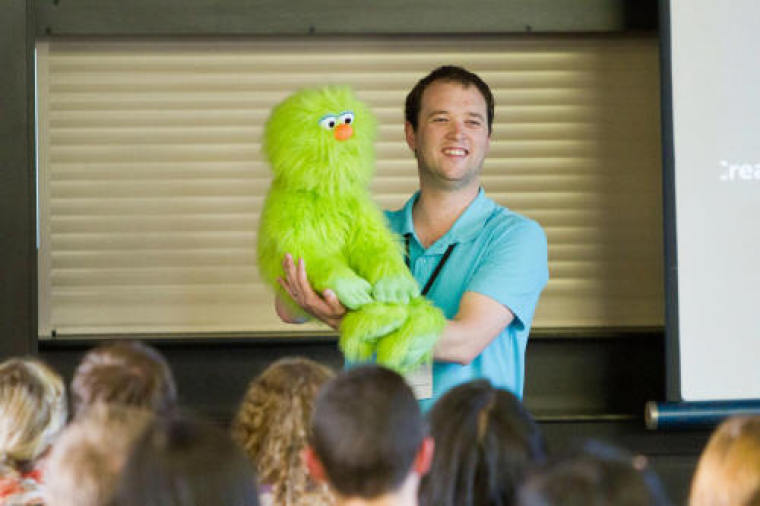
I referenced a show on ABC3 to watch, (which is simply their news channel). Lots can be learnt by the way they use language to communicate to a wider audience. This time I want to talk about not only the language we use, but also who is up the front. I want to draw our attention this time, to how we actually think about children, and if we think they are 'worthy' to be part of our service.
Firstly, I want to talk about different ways we think about children in church. There are a couple of different views on children in church, and funnily enough, the main distinction is: are they adults or are they children. This sounds silly, of course children are children, so let me explain.
Think about your own church service. What is the main age that is up the front? If it is a normal church, it is probably adults. And think about it, that's fair enough; adults need to lead clearly, play clearly, sing clearly, and pray clearly. It's a skill set to be able to do these things well, and lead the congregation. Obviously the front of church is not the place for children… right? (if you aren't cringing, then maybe you should just keep reading)
Church is sometimes seen as a place that is only truly understood by adults. And this is why children are not seen up the front of church, and are just told to sit in church, and be quiet, as they need to learn to behave like adults, in an adult environment.
Children, in the adult environment, are considered important, though cannot be part of the service, if they are lucky they might get a children's talk, where the children are called down the front (as church is not a place for them, so they need to come to the front) for a short pithy teaching time, the told to leave.
Ok, so some of that was a little too blunt, but you get the idea. Sometimes we don't cater for children in church as we think church is not for them.
A different way of thinking about children,is when lots of effort is put in to give them their own program. A 'high place' is given to children as the church is trying to teach them in a relevant way. Though doing this, they are cut off from the main church service, and the same problem is seen as the above approach, that is, that children should not be part of the service.
There is a final approach, which is a bit of a compromise between the two. Obviously we want to teach children faithfully in ways they can understand, and sometimes a 20 – 40 minute sermon is not the best way to teach children. Though we do need to think about how we involve them. If we think that children need to be full participants in the service, then we need to think about how and where we can involve them.
Practical
Have children help lead the service with you, and on a normal Sunday not on a special children's service, but on a normal service. Have children help read prayers. Older children, who can read, can read the bible in the service. If we want to value children in our service, then we need to integrate them into our service. Not only will this help the children be heard, but it will also encourage the adults, plus it will also help other adults now that they too can be part of the service, and not just the few elite who can speak well.
Church is a place for all to serve, all to belong, and all to participate. Not just those adults we think can speak well. Think about how and who is serving up the front in your service and think about how inclusive you are actually being.
Some credit for this article goes to Andrea Baxter, from her article from the Journal of Lutheran church musicians, Vol 20, No.1, March 2012, titled 'Integrative approach to Children in Worship'
Stephen Urmston is based in Melbourne and currently completing a Masters of Divinity at Ridley Melbourne. He works at St Jude's Anglican Church as an Associate Children's Minister.
Stephen Urmston's previous articles may be viewed at www.pressserviceinternational.org/stephen-urmston.html